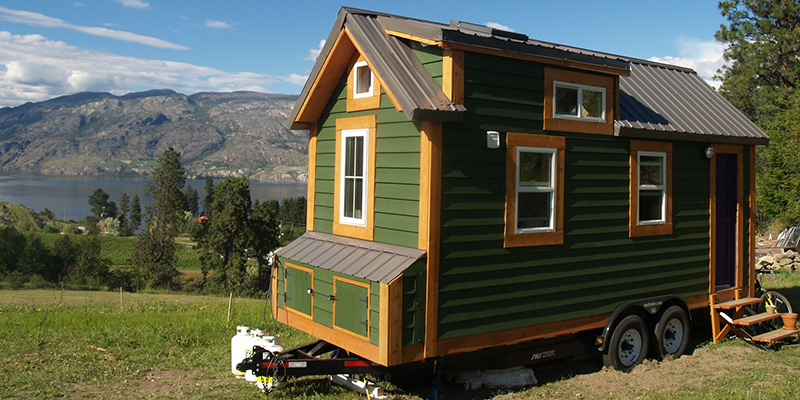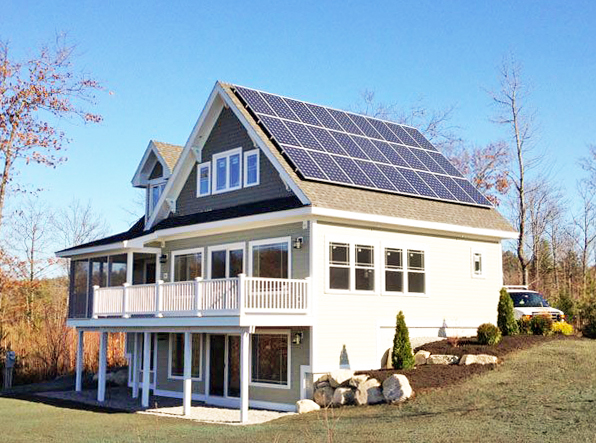
In the pursuit of a more sustainable lifestyle, many individuals are turning their attention towards their wardrobes. This article explores eight resolutions to enhance your wardrobe with sustainable fashion.
From embracing ethical brands and the principles of slow fashion to engaging in secondhand shopping and clothes swapping, there are numerous ways to make conscious choices when it comes to clothing.
By incorporating recycling textiles, eco-friendly fabrics, sustainable manufacturing, and fair trade practices, you can create a wardrobe that aligns with your values and contributes to a more sustainable future.
Ethical Brands
Ethically sourcing clothing from reputable brands is a key step towards achieving a sustainable wardrobe. When it comes to sustainable fashion, choosing ethical brands is essential. These brands prioritize fair labor practices, environmental responsibility, and transparency throughout their supply chains. By supporting ethical brands, consumers can ensure that their clothing is made under safe and fair working conditions, without exploiting workers or harming the environment.
Ethical brands often implement sustainable manufacturing practices, using eco-friendly materials and reducing waste in their production processes. They may also prioritize using organic and natural fibers, as well as recycled materials, to create their garments. These choices contribute to the overall sustainability of the fashion industry by minimizing the use of harmful chemicals and reducing the reliance on non-renewable resources.
Slow Fashion
Slow fashion is a movement that promotes mindful consumption and encourages individuals to prioritize quality, longevity, and sustainability when it comes to their clothing choices. It is a response to the fast fashion industry, which is known for its harmful environmental impact and unethical labor practices. Slow fashion encourages conscious consumerism and seeks to create a more sustainable and ethical fashion industry.
Sustainable fashion: Slow fashion focuses on supporting brands and designers that prioritize sustainable practices, such as using organic or recycled materials, reducing waste, and minimizing their carbon footprint.

Conscious consumerism: Slow fashion encourages individuals to make more thoughtful and intentional choices when buying clothes, considering factors such as the environmental impact, labor conditions, and the durability of the garments.
Longevity: Slow fashion promotes investing in high-quality pieces that are designed to last, rather than buying cheap, disposable items that contribute to the cycle of fast fashion.
When considering sustainable fashion options, one effective approach is to explore secondhand shopping as a means of reducing waste and promoting a circular economy.
Secondhand shopping involves purchasing pre-owned clothing and accessories, allowing them to have a new life and reducing the demand for new production. This not only reduces waste but also saves resources and energy that would otherwise be used in the manufacturing process.
Moreover, secondhand shopping offers the opportunity to discover unique and vintage finds, adding a touch of individuality to your wardrobe.
Thrift shopping, in particular, has become increasingly popular, with many stores and online platforms dedicated to selling secondhand items.
Clothes Swapping
Clothes swapping, also known as clothing swaps or swap parties, offers several benefits for individuals looking to enhance their wardrobe sustainably.

Firstly, it allows for the exchange of clothes that are no longer wanted or needed, reducing waste and promoting a circular economy.
Additionally, clothes swapping creates a sense of community and encourages social interaction, as participants come together to share their fashion choices and experiences.
Lastly, it expands fashion choices by giving individuals access to a wider range of clothing styles and brands, without the need for excessive consumption or spending.
Benefits of Clothes Swapping
Clothes swapping offers a multitude of benefits for those looking to enhance their wardrobe with sustainable fashion. By participating in clothes swapping, individuals can actively contribute to reducing fashion waste and promoting community engagement.
Here are three key benefits of clothes swapping:
- Environmental Impact: Clothes swapping helps to reduce the amount of clothing that ends up in landfills, minimizing the environmental impact of fashion waste. By extending the lifespan of clothes through swapping, we can reduce the need for new production and the resources required to create new garments.
- Cost-effective: Clothes swapping allows individuals to refresh their wardrobe without spending a fortune. Instead of buying new clothes, participants can exchange their gently worn items for new ones. This not only saves money but also encourages a more conscious approach to fashion consumption.
- Social Connection: Clothes swapping events bring people together, fostering a sense of community and connection. It provides an opportunity to meet like-minded individuals and share fashion tips, fostering a sense of belonging and collective responsibility towards sustainable fashion.
By fostering a sense of collective responsibility and engagement, clothes swapping creates a sustainable community that actively contributes to reducing fashion waste and promoting conscious fashion consumption.
Clothes swapping, also known as clothing swaps or swap parties, is a community initiative that encourages individuals to exchange their unwanted clothing items with others, rather than discarding them. These events provide an opportunity for people to refresh their wardrobes without contributing to the environmental impact of fast fashion.

Sustainable fashion events, such as clothing swaps, not only promote the reuse of garments but also foster a sense of community and connection among participants. They encourage individuals to think critically about their fashion choices and consider the environmental and social implications of their clothing purchases.
Expanding Your Fashion Choices
Encouraging the exchange of unwanted clothing items, clothes swapping offers an opportunity to expand fashion choices sustainably. By participating in clothes swapping, individuals can contribute to the sustainable fashion movement while enjoying the freedom to explore new styles and trends. Here are three benefits of clothes swapping:
- Eco-consciousness: Clothes swapping reduces the demand for new clothing production, which helps decrease the industry's environmental impact.
- Budget-friendly: Swapping clothes allows individuals to refresh their wardrobe without spending money on new items.
- Capsule wardrobe: Clothes swapping encourages the concept of a capsule wardrobe, where individuals curate a smaller collection of versatile, high-quality clothing pieces that can be mixed and matched to create various outfits.
Recycling Textiles
Textile recycling is a sustainable practice that aims to divert textile waste from landfills and repurpose it for new products. It plays a vital role in upcycling textiles and reducing the environmental impact of the fashion industry.
Textile waste management is a pressing issue as the industry produces a significant amount of waste each year. By recycling textiles, we can minimize the amount of waste that ends up in landfills and reduce the demand for new resources.
Recycling textiles involves collecting used clothing and textiles, sorting them based on their condition, and transforming them into new products. This process not only helps to conserve resources but also reduces the energy and water consumption associated with producing new textiles.
Eco-Friendly Fabrics
Eco-friendly fabrics offer numerous benefits for both the environment and consumers. These fabrics are made from sustainable materials and produced using environmentally friendly processes.
Some popular eco-fabric options include organic cotton, bamboo, hemp, and Tencel. These fabrics offer a range of advantages such as biodegradability, low carbon footprint, and water efficiency.

Benefits of Eco-Fabrics
The use of sustainable fabrics in fashion offers numerous advantages for both the environment and consumers. Eco-friendly fabrics, also known as eco-fabrics, are made from materials that have a lower impact on the environment compared to traditional fabrics.
Here are some benefits of using eco-fabrics:
- Reduced environmental impact: Eco-fabrics are typically made from organic or recycled materials, which require fewer resources and produce less pollution during manufacturing.
- Healthier for consumers: Eco-fabrics are often free from harmful chemicals and toxins, making them safer for consumers to wear.
- Innovation and versatility: The development of eco-fabrics has led to innovative and versatile options for designers and consumers, ranging from organic cotton and hemp to recycled polyester and Tencel.
Popular Eco-Fabric Options
One of the key considerations when it comes to sustainable fashion is the choice of eco-fabric options available in the market.
Two popular eco-friendly fabric options that have gained popularity in recent years are bamboo clothing and hemp fabric.
Bamboo clothing is made from bamboo fibers, which are known for their softness and durability. Bamboo is a sustainable crop that grows quickly and requires minimal water and pesticides. It is also naturally antibacterial and hypoallergenic, making it a great choice for those with sensitive skin.
Hemp fabric is another eco-friendly option that is made from the fibers of the hemp plant. Hemp is a highly sustainable crop that requires minimal water and pesticides to grow. It is known for its strength and durability, as well as its ability to regulate body temperature and resist odors.
Both bamboo clothing and hemp fabric are excellent choices for those looking to build a more sustainable wardrobe.

Sustainable Manufacturing
Sustainable manufacturing plays a crucial role in promoting environmentally conscious practices within the fashion industry. By implementing responsible production methods, fashion brands can significantly reduce their carbon footprint and contribute to a more sustainable future.
Here are three important aspects of sustainable manufacturing:
- Efficient use of resources: Sustainable manufacturers prioritize the efficient use of water, energy, and raw materials, minimizing waste and pollution.
- Adoption of renewable energy: Many sustainable manufacturers are transitioning to renewable energy sources, such as solar or wind power, to reduce greenhouse gas emissions and dependence on fossil fuels.
- Ethical labor practices: Sustainable manufacturing goes beyond environmental considerations and also focuses on fair treatment of workers, ensuring safe working conditions and fair wages.
Fair Trade
Promoting ethical practices within the fashion industry, fair trade ensures that workers are treated fairly and receive fair wages for their labor.
Fair trade production involves creating partnerships between clothing brands and producers in developing countries, with a focus on transparency, accountability, and sustainability.
By adhering to fair trade principles, brands commit to providing safe working conditions, prohibiting child labor, and ensuring that workers have access to fair wages and benefits.
This has a significant impact on workers' rights, as it helps to break the cycle of poverty and exploitation that often plagues the fashion industry.
Fair trade empowers workers, giving them a voice and the opportunity to improve their living conditions.

Frequently Asked Questions
How Can I Find Ethical Brands That Align With My Values?
To find ethical brands that align with your values, research and assess their commitment to sustainable practices, transparency, and fair labor. Look for certifications like GOTS or Fair Trade. Read reviews and engage with brands on social media to gather more information.
What Are Some Tips for Incorporating Slow Fashion Into My Wardrobe?
Incorporating slow fashion into your wardrobe involves embracing sustainable fashion trends and building a capsule wardrobe. By choosing quality, timeless pieces, you can reduce waste and make conscious choices that align with your values of ethical and eco-friendly fashion.
There are numerous online marketplaces and virtual thrift stores available that can help you find secondhand clothing. These platforms provide a convenient way to shop sustainably and contribute to reducing fashion waste.
Organizing a clothes swapping event in your community is a great way to promote sustainable fashion and build a strong fashion community. Encourage community involvement and spread the word through social media and local organizations.
What Are Some Creative Ways to Recycle Textiles at Home?
Upcycling projects and DIY fabric dyeing are creative ways to recycle textiles at home. These methods allow individuals to transform old or unwanted textiles into new, unique pieces, reducing waste and promoting sustainability.